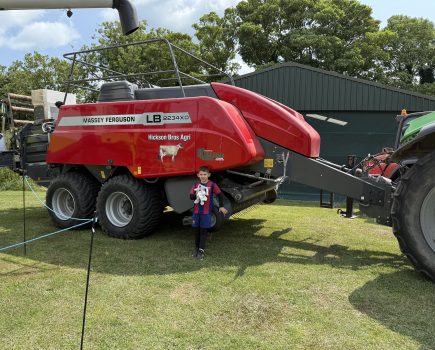As the Government’s forecast for farm business income for the year to February 2024 confirms, the decline in arable farmers’ economic fortunes over the past year must be one of the most dramatic reversals any of us can remember. The figures show a 77% average decline in income per farm from £150,000 to £34,000.
Almost exactly two years ago feed wheat prices peaked at £340 per tonne and oilseed rape at £930 per tonne. These two crops form the core profitability on most arable farms, so the financial impact of their decline in value, to £150 per tonne for wheat and £330 per tonne for rape, cannot be overstated.
A collapse in arable commodity prices is one thing, but when that is combined with the surge in the cost of production seen in the past two years, it magnifies the problem hugely. Farm business data company Yargo has found that variable costs of producing wheat in 2023 increased significantly, with the costs of fertiliser and fungicides in particular rising steeply.
Predictably, then, the forecasts from business consultants Andersons for their ‘typical’ model 600-hectare, 40% owned, ‘Loam Farm’ are extremely gloomy. They show a margin from production of £153 per hectare in 2023 (down 59% on 2022), with that due to drop to £18 per hectare in 2024 (down a further 88% on 2023).
Many hope that the Sustainable Farming Initiative (SFI) will come to their rescue. But, as a friend who grows 400 hectares of cereals and has just signed up said recently: “It will pay us £16,000 a year, which is not much compensation for the withdrawal of the Basic Payment Scheme.”
And that, of course, is the third element of this perfect storm that is decimating arable incomes: the phasing out by 2027 of the old EU BPS subsidy. Even before the recent decline in arable commodity prices and the rise in our production costs, only one in ten UK arable farms was profitable without BPS, so just where we are headed if current trends continue doesn’t bear thinking about.
One course of action is that we all get fed up with our losses and pile into some of the more attractive options under the recently revamped Environmental Land Management scheme (ELMS). Fifty new ELMS actions were announced this year and perhaps many farmers will be tempted, for example, to plant a nectar flower mix paying £739 per hectare. Similarly, if wheat prices don’t improve, the option to raise water levels in arable peat soils to near the land surface for £1,381 per hectare might be hard to resist.
Even if farms do see ELMS as a financial saviour, the Government has made it clear that, should UK grain production levels come under threat due to large-scale uptake, they will withdraw or ration ELMS participation.
Like it or not, it seems that most of us will have to continue with our arable crop production. Which reminds me of a 20-hectare block I’ve still got to sow to spring beans. Thanks to all the rain, the field looks like I’ve taken an ELMS payment to raise water levels to near (or even above) the land surface. Unfortunately, I’m not being paid £1,381 per hectare, but perhaps by next year I’ll have signed up.







